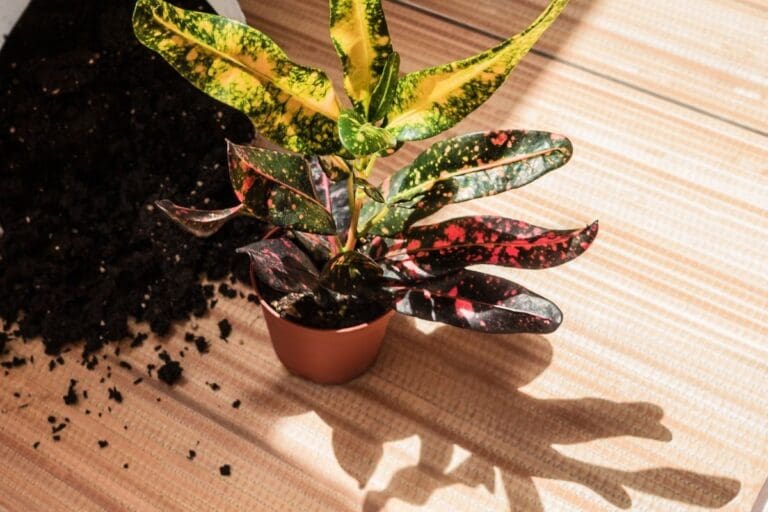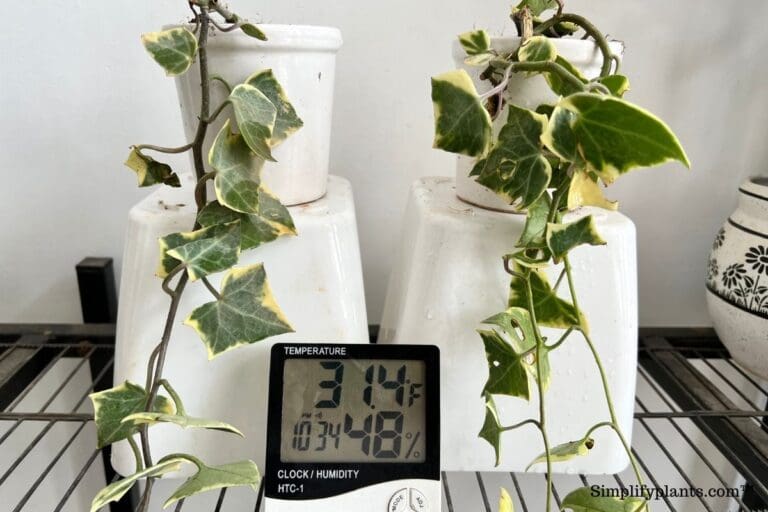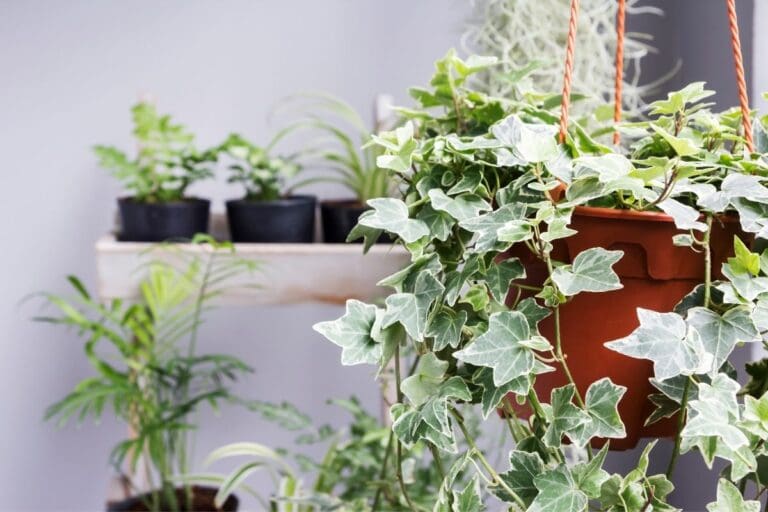Where Should I Keep My Snake Plant? (Best Placement+Tips)
Snake plants are versatile houseplants and the most tolerant of all houseplants ever. Have you got a brand new snake plant and don’t know where to keep them? Finding the right spot for a snake plant could be a daunting task as they have specific needs to be taken care of. Let’s find out what it is.
While placing a snake plant, check whether the spot fulfills enough indirect light exposure or not. The temperature and moisture level should be moderate to high for the snake plant to thrive. Also, keep the plant away from your children and pets as they are mildly toxic in nature.
Snake plants may suffer if kept in unfavorable conditions and ignored for a long time. They are difficult to kill, but if you keep on neglecting them, they might die too.
It seems like a lot to be taken care of while placing a snake plant. That’s not true because we are here to make it simple. We have all the factors listed concerning the placement of a snake plant. So, let’s get right into it.
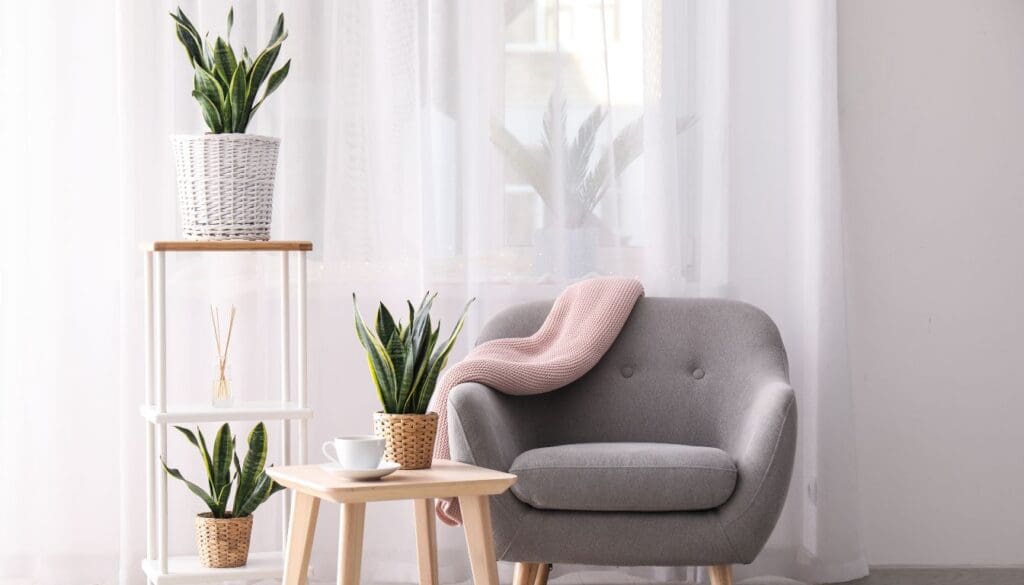
Please note: Simplify Plants is reader-supported. Some links in the post are affiliate links and I get a commission from purchases made through links in the post.
Factors determining the placement of the snake plant
While choosing a spot for your snake plant, keep certain factors in mind so that your plant remains healthy and bushy.
Since these plants are adaptable to a variety of conditions, you can experiment with conditions when unavoidable.
Light
Light is essential for any plant to grow, and the same is true with a snake plant as well. Snake plants also need light to thrive. However, They are highly adaptable to almost all kinds of lighting conditions.
The direct sun can burn the leaves of the snake plant, also drying them rapidly. Brown spots can be seen on leaves in such conditions.
Indirect light is something a snake plant needs to thrive. Such lighting is filtered, tolerable throughout the day, and keep the plant moist for considerate time. This light source will give you a healthier, happier, and growing snake plant.
Low light is somewhere in the corner, shady area where hardly any light comes in. Snake plants are adaptable, so they will survive in such conditions too but will not show much growth, and the leaves might droop and stretch too.
Windows facing west, east, or south are a good pick when keeping your snake plant. The plant should be kept a few feet(6-10) away from the window to avoid scorching the sun directly.
Outdoors placed snake plants should be kept under a shade, or they will get a sunburn. Indoors shield them through curtains from direct sun.
Also read: How much light do snake plant need?
Temperature
Snake plants are tough and tolerant of a variety of conditions. They can tolerate a wide range of temperatures.
For a happy snake plant, provide them with a temperature level between 65 degrees Fahrenheit to 80 degrees Fahrenheit. They can even grow in hot and dry environments.
But you should not forget that if you push them over the limit, they might suffer due to extreme and prolonged unfavorable temperature levels.
Do not forget your snake plant outdoors in temperature below 55°F; they will end up getting a scar on leaves due to consistent low temperature. Prefer keeping them indoors during such conditions.
During cold weather, many hobbyists keep their snake plants near vents, radiators, or other heating systems expecting them to raise temperature levels for snake plants.
They are not entirely wrong but keeping plants too close will instead burn their leaves and make them too dry.
Keep a snake plant a few feet away from these heating systems where they can feel the warmth but not too much heat.
Humidity
Snake plants are excellent plants when it comes to cultural conditions, especially humidity. They can easily tolerate low to high humidity levels.
Though they would enjoy high humidity levels provided you don’t overwater them. You do not need to mist to increase humidity as their leaves don’t like to be wet.
A humidifier can be used to maintain moderate humidity levels for consistency and to avoid shifts in humidity.
The best humidity level would be a moderate level, i.e., neither too low nor too high. That is best for succulents like snake plants.
Things to keep in mind while placing a snake plant at home
Let us have a look at some common spots for your snake plants.
Near window

Snake plants prefer filtered light that helps them maintain their lustrous leaves. Window sheer curtains do the job of shielding the plant by filtering the straight sun.
When keeping near the window, you should check the intensity of light pouring in on your plant.
If the intensity of light is high or you need to keep your windows open for long durations due to specific reasons, then you need to re-think before keeping your snake plant in such a spot.
Keep a snake plant a few feet away from the window with too much direct light or window kept open all day long. Make sure they get enough light when you keep them away from the window.
They prefer the window facing east for whole daylight exposure. There is no thumb rule or prescribed spot for keeping your plant. It varies from place to place. You might find your snake plant happier near the west-facing window too.
During winters, you can keep them outdoors to get more light as the intensity is low during winters.
When keeping them near the window during winters, avoid leaves touching the window as your plant might get cold and temperature shocks.
Also, keep two things in mind while placing them near a window. Avoid too much of:
- Direct sun
- Cold drafts
If you mess up with these two things, then your snake plant is likely to suffer.
Keeping away from children
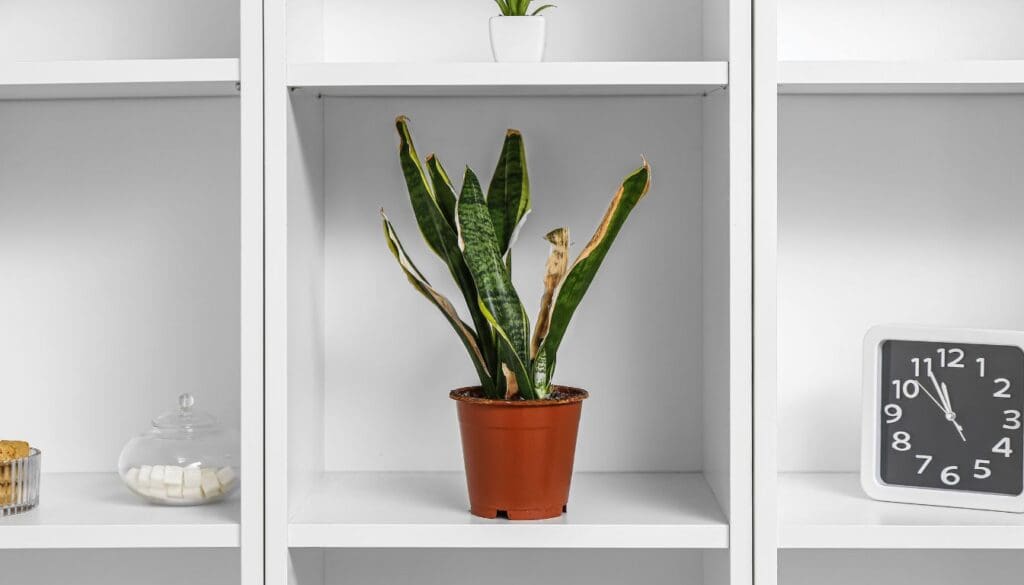
Snake plants can make your children sick. Yes, sad but true. Though snake plants are mildly toxic to humans, they give short-lasting symptoms.
Children are more sensitive and might suffer more than adults. If your children keep touching or chewing plants leaves, you need to be really cautious while placing your snake plants.
Snake plants can lead to swelling, numbness on the tongue, gastronomical reactions if ingested in large volumes. It also causes skin irritation when the juice of the plant comes in contact with the skin.
All the parts of snake plants are deadly, so do not ignore the fact while placing your snake plant.
Keeping it out of reach of pets
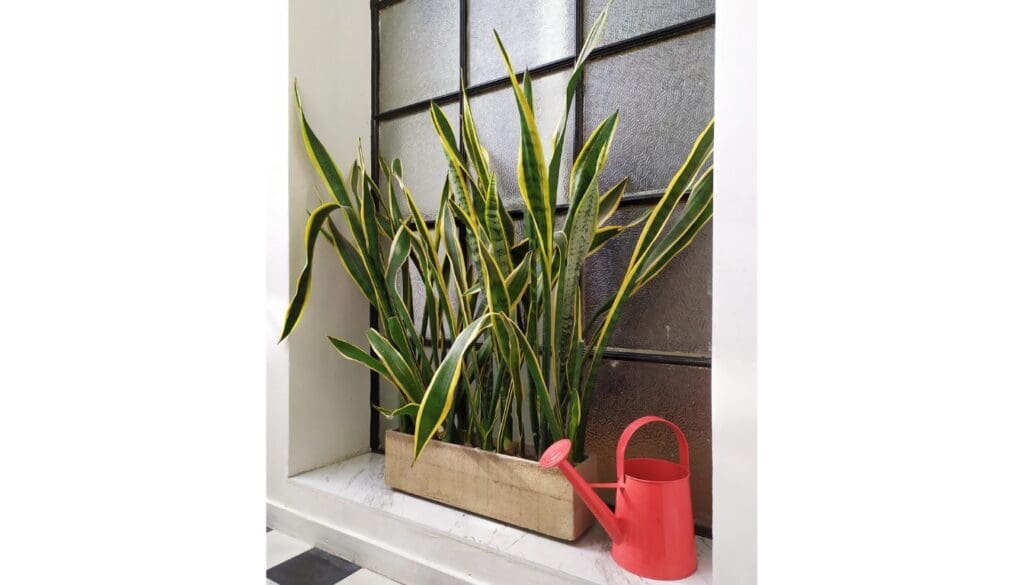
Snake plants have saponin toxins present in all parts, making them entirely poisonous for your pets.
When it comes to pets like dogs and cats, they are quite curious and are likely to take a bite and suffer.
If any of your pets ingest a part of the snake plant, they may show symptoms like:
- Swelling on the lips, tongue, and mouth
- Vomiting and diarrhea
- Abdominal pain
- Nausea
- Loss of appetite
The saponin toxics affects the gastronomical tract, which can damage the blood cells of your pets.
Placement should be done by keeping in mind the toxicity of snake plants if you have pets. Though a small amount will not harm your pets, a large amount of ingestion will result in suffering.
Snake plant leaves are inedible, which most of the pets will avoid chewing, but it is always a good thing to be cautious.
Avoid placing near a fireplace

Snake plants do not enjoy cold weather much due to which many hobbyists keep them near the fireplace or other heating systems to shoot up the required heat.
Few things should be monitored correctly before keeping your snake plant near a fireplace. Snake plant leaves can burn due to excessive heat from the fireplace. They will dry rapidly, making them thirsty and bone dry.
That should be corrected by placing the plant a few feet away from the fireplace.
While moving your snake plant, keep your hand facing the fireplace, move to a distance where your hand can feel slight heat but not feel like burning. That would be the perfect distance.
Temperature of the room
As discussed earlier, we know the ideal temperature for the snake plant ranges between 55-80°F.
If the temperature goes up, the snake plant will suffer from prolonged high-temperature levels. The leaves and soil will dry out quickly and will lose their moisture too soon. That will initially affect the health of the leaves and then the entire plant.
Snake plants might not grow if the temperature falls below 55°F. The health of the plant will also suffer due to unfavorable conditions for a long time. The plant will not function appropriately, compromising the photosynthesis process and leading to pale, lifeless leaves.
We are not saying you should always keep them in favorable conditions; it might not be possible all the time, but knowing the ideal needs and monitoring the same will help.
During unfavorable conditions, keep your snake plant indoors to avoid cold drafts and temperature shocks.
Snake plant in bedroom
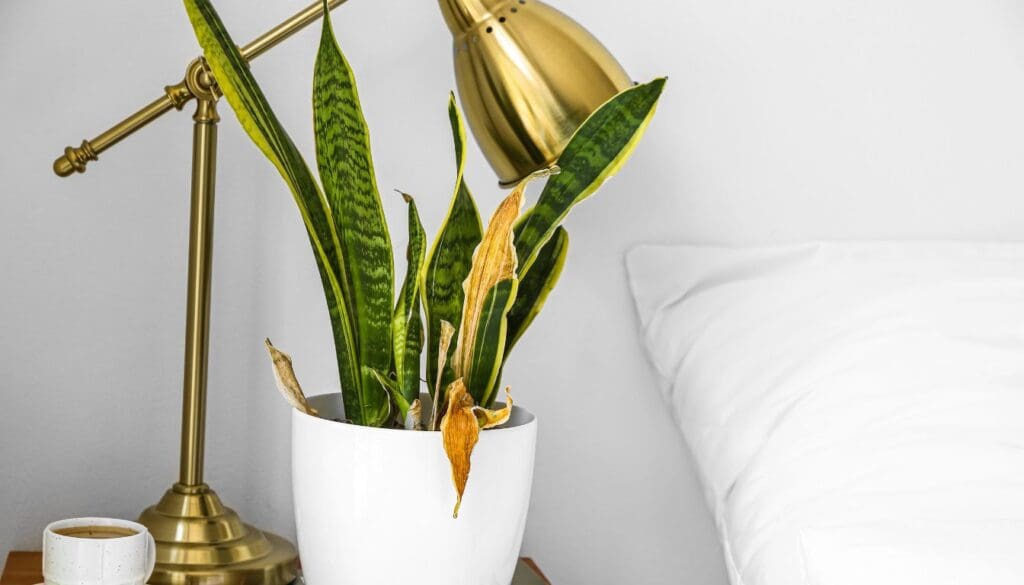
Snake plants are unique plants that add to the beauty of the space. They are perfect for keeping in the bedroom.
Why? They purify the air, convert a lot of carbon dioxide to oxygen, and absorb harmful toxins from the air, just perfect for your bedroom.
However, while keeping a snake plant in bedrooms, there are a few factors you need to keep in mind ey though:
- Keep at a spot where it can get light from either natural or artificial sources for at least 6-8 hours.
- Avoid keeping exact opposite to AC, as the dry cold air will harm and dry the plant quickly, resulting in dull and pale leaves.
- Rotate occasionally for even distribution of light. Although, the snake plant thrives in low light too.
You can keep on the side table or near a window as these are some safe spots.
Snake plant in bathroom
Snake plants are adaptable to various conditions, making it easier for plant lovers to experiment while placing them indoors.
Additionally, they can keep the plant in places where they spend most of their time, such as the bedroom, bathroom.
Since snake plants filter out formaldehyde, which is present in cleaning products, personal care products, tissues, etc., they are perfect for the bedroom and bathroom.
If kept in a bathroom, the snake plant will filter the toxins present in cleaning and hygiene products and keep the environment fresh. They can easily survive in humid and low light conditions.
Keeping a snake plant in the bathroom needs some attention towards humidity and light. The bathroom is a space that is wet most of the time.
You need to place your snake plant in a spot where they will not get water every other day due to regular water use, as there is already enough humidity.
Snake plants should get sufficient light, even if it doesn’t need a lot of it to grow bigger and healthier. If your bathroom doesn’t receive much light, you can keep switching the plant with other houseplants to avoid humidity and light related issues.
Some tips for growing healthy snake plant
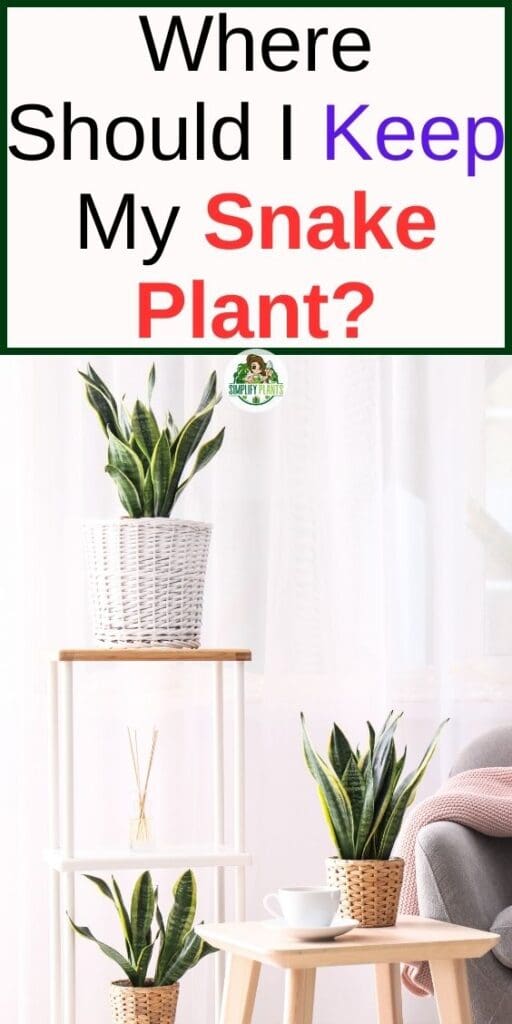
- Indirect light, high-temperature levels, and moderate humidity are the three factors to be considered when placing snake plants indoors.
- Keep experimenting with the placement of your plant.
- When you see something kosher in your plant, move to another best spot according to their needs.
- Place away from the window to avoid direct sun and cold drafts.
- Do not mist them. Snake plant doesn’t like their leaves wet. They will thrive in moderate humidity levels too.
- Use them as a great source of air purifier. These plants filter a lot of toxins found in several household products.
- Wipe the leaves with a damp cloth occasionally.
Source: The University of Arkansas Division of Agriculture, University of Minnesota, Snake plant profile, Lighting Indoor Houseplants.
Recommended Garden Supplies
| Product Image | Our Recommended Gardening Supplies | Check Offers! |
|---|---|---|
Top Top
Top
Top
Top
Top
Top
Top
Top | rePotme Houseplant and Tropical Classic Potting Soil Mix | Check Offer On Amazon |
 Top
Top
Top
Top
Top
Top
Top
Top | Espoma Organic Indoor Plant Food | Check Offer On Amazon |
 Top
Top
Top
Top
Top
Top
Top
Top | GooingTop LED Grow Light 6000K Full Spectrum Clip Plant Growing Lamp | Check Offer On Amazon |
 Top
Top
Top
Top
Top
Top
Top
Top | Soil Moisture Meter | Check Offer On Amazon |
 Top
Top
Top
Top
Top
Top
Top
Top | Govee Hygrometer Thermometer, Bluetooth Enabled! | Check Offer On Amazon |
 Top
Top | LEVOIT Humidifiers for Large Room(Best For Plants) | Check Offer On Amazon |
 Top
Top
Top
Top
Top
Top
Top
Top | Upgraded DIY Automatic Drip Irrigation Kit, 15 Potted Houseplants Support | Check Offer On Amazon |
 Top
Top
Top
Top
Top
Top
Top
Top | Stainless Steel Heavy Duty Gardening Tool Set | Check Offer On Amazon |
 Top
Top
Top
Top
Top
Top
Top
Top | Bonide Insecticidal Soap | Check Offer On Amazon |
 Top
Top
Top
Top
Top
Top
Top
Top | Bonide 32 oz Spray Neem Oil for Organic Gardening | Check Offer On Amazon |
 Top
Top
Top
Top
Top
Top
Top
Top | Garden Safe Fungicide | Check Offer On Amazon |



